We don't remember days,
We remember MOMENTS.
- Cesare Pavese

Today I had another Korean food escapade in Hwang Kung Restaurant. It's a restaurant located at the outskirt of IT Park, Lahug. It's at the left-hand side of Citi Church if your facing in front of it.
Since I'm already two days away from my last day of working, some colleagues of mine and a Japanese student organize a farewell for me and another colleague of ours. It happens that the only available restaurant after our shift (which is midnight) around IT Park are Korean restaurants so we tried this one for a change. This restaurant was also recommended by a Korean student of ours so we think its good coming a Korean itself.
When we went inside the ambiance was good. It was very modern and very well-lit. They have close space cubicles for four sitters who wants privacy and has open area for large numbers of groups like us. They also have flat screen TV monitor which shows for customers entertainment. There other facilities like comfort room was also clean an in good condition. It was a bit quite when we came in since only a few customers were there. Going to the food were not the pros about it so we let our Korean student recommend which food tasted good. (Note: Though I love Korean food I only knew few of them since their names are a bit difficult to remember. HEHEHE)
Here were our orders:
- BULGOGI (Grilled Marinated Beef 불고기) - one of Korea's most popular beef dishes that is made from thinly sliced sirloin or another prime cut of beef (rib eye). It is usually marinated in a mixture of soy sauce, sesame oil, black pepper, garlic, ginger and sugar for two to four hours to enhance the flavor and its tender.
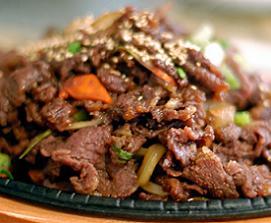
- SAMGYUPSAL (Grilled Pork Strips 삼겹살) - another popular Korean meat dish that are enjoyed at home or at Korean restaurants that specializes in meat dishes. It consists of thick pork strips, served in the same fashion as galbi but there is no marinating involved. It is usually cooked on a grill with pa muchim, kimchi, mushrooms, garlic, onions and consumed altogether. This dish is usually served with a side of lettuce, spinach, or other leafy vegetable(s), which is used to wrap a slice of cooked samgyupsal. A dab of ssamjang (usually made of gochujang or dwenjang), kimchi, or other side dishes are also added and then eaten as a whole.
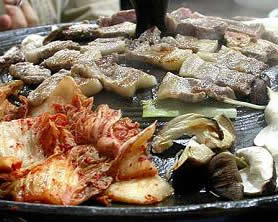
- CHA-JANG MYUN (Black Bean Paste & Vegetable Noodles 자장면) - Chajang is the sauce made from black bean paste which gives its distinctive black color and myun means noodle. The final chajang sauce contains onion, meat and/or seafood, usually squid, shrimp, sea cucumber and others but never any fish ingredients. Some starch is added to give it a thick consistency and it is served over noodles.
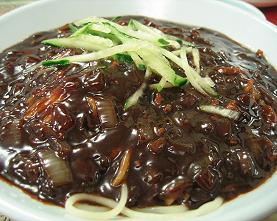
- KIMCHI CHIGAE ( Fermented Cabbage Soup 김치찌개) - Kimchi chigae is a very popular soup made primarily with kimchi. Different variations can exist but sliced kimchi is usually put into a pot with tofu, onions, garlic and beef, pork or seafood, which are all boiled together with water or anchovy stock. The soup is seasoned with either dwenjang and/or gochujang which contributes to the distinctive red color. Typically, kimchi chigae is eaten with a bowl of rice accompanied by various side dishes.
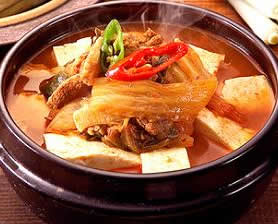
- MANDOO (Korean Dumpling 만두) - Mandoo is a Korean dumpling consisting of minced meat and vegetables wrapped in a thin piece of dough. Popular meat fillings include shrimp, ground beef, pork or fish. And popular vegetables ingredients can include bean sprouts, green onions, shredded kimchi and much more. Korean mandoo can be cooked in several ways where it is simmered in beef stock, steamed or fried. It is usually dipped in soy sauce mixed with vinegar and served with kimchi on the side.
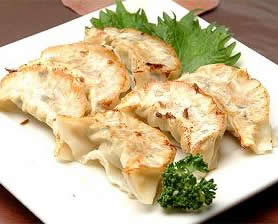
- OJINGUH TIGIM (Deep Fried Battered Squid 오징어 튀김) - Ojinguh tigim is a popular Korean appetizer before a meal or while drinking a cold mekju. Very much like the Western calamari dish, it consists of batter-coated, deep fried squid that are served plain with a dipping sauce. However, unlike popular dipping sauces such as tartar or marinara sauce found alongside calamari, this Korean version is usually served with soy sauce mixed with vinegar and crushed red pepper flakes (gochugaru) which will add some spiciness to each bite.
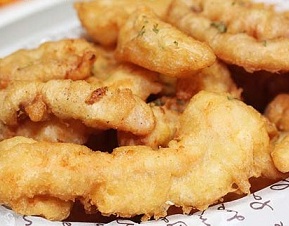
PHOTO SHOOT :P
 |
| Our messy table full with orders. |
Presenting our international chef from Japan and Korea.
(Sac and Daniel)
GROUP PICTURE :P
(from the left: Champ, Miss Dunna, Fortune, ME, Lex, Sac, Ginger and Daniel.)
Well, not bad for my last working days. I had another Korean cuisine escapade before I leave. Surely, its one of the most memorable one. I'd like to thank my Filipino, Japanese and Korean friends for giving me such a wonderful delight that time.
For more information and reservations you can call:
09287249631
Korean Food Info Credits to:
http://www.trifood.com/food.asp
For more information and reservations you can call:
09287249631
Korean Food Info Credits to:
http://www.trifood.com/food.asp






No comments:
Post a Comment